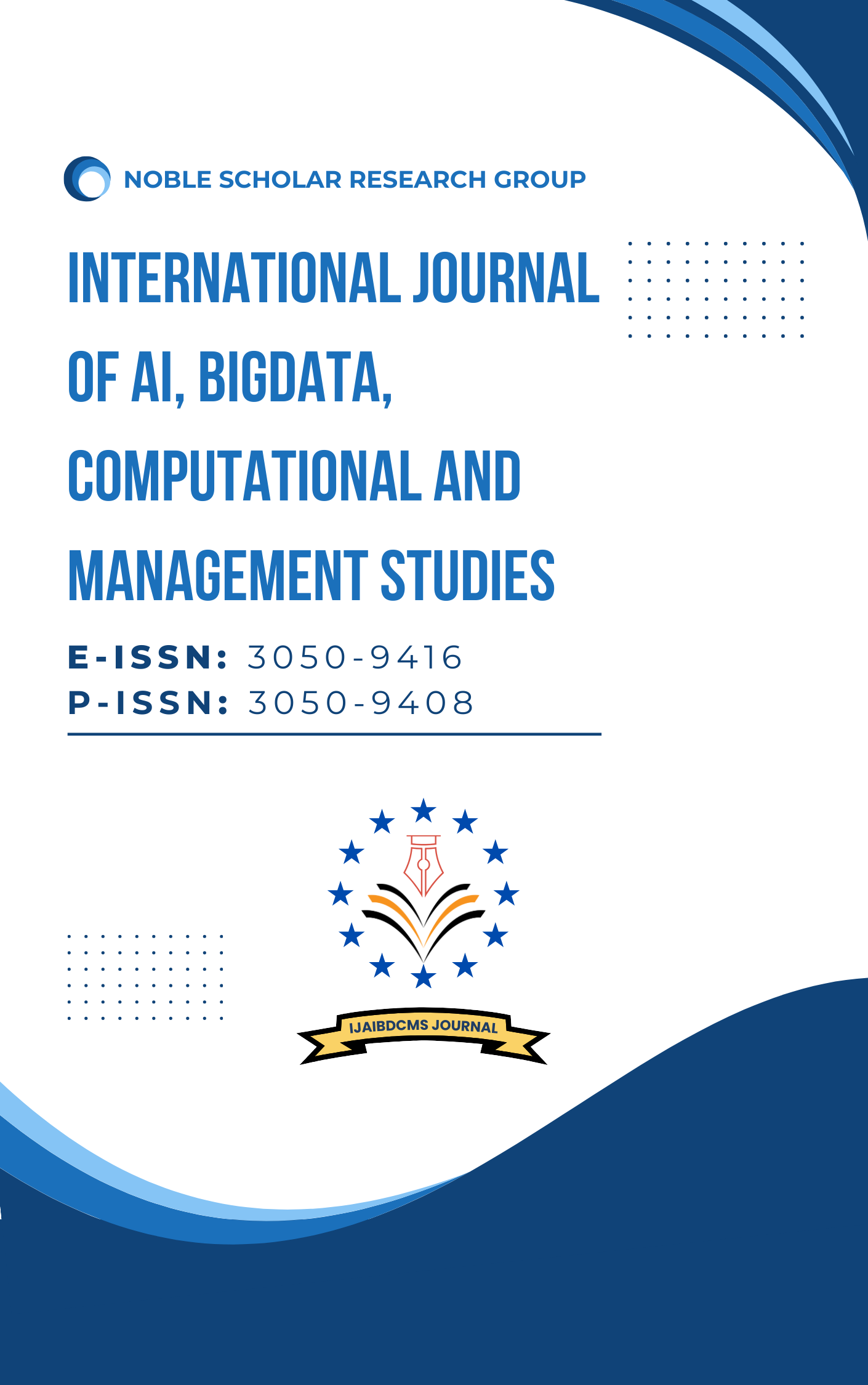AI-Driven Product Recommendations in eCommerce: Enhancing User Engagement and Sales
DOI:
https://doi.org/10.63282/3050-9416.IJAIBDCMS-V5I2P105Keywords:
eCommerce, Recommendation Systems, User Engagement, Deep Learning, PersonalizationAbstract
AI has become the most common technology in eCommerce platforms through which it has revolutionised the behavior of customers. Among the most effective is the product recommendation system, where AI brings the difference to the general user experience using the behavioral data, interactions history, and context information. These systems engage collaborative filtering, content-based filtering, deep learning models, and reinforcement learning to understand customer patterns and preferences and churn out seamless, timely recommendations. It also benefits customer satisfaction since customers avoid decision tiredness and are presented with products that meet their wants and expectations. This paper examines the concept of recommendation systems, the components that make recommendation architectures, methodologies used in recommendation systems in the context of today’s e-commerce environment, and performance metrics used to evaluate these systems. Performing accuracy, we estimate the number of machine learning algorithms applied to real-world datasets by benchmarking them on important KPIs like CTR, conversion rates, AOV, and user retention. Furthermore, the study also explains how, through personalization driven by AI, sales revenue improves, as well as innovation from the use of dynamic content and learning. That is why such issues as scalabilities, algorithmic bias, and cold-start are also considered, and possible directions for further research are outlined. The results help to advance the knowledge about the future possibilities to use AI as the key enabler for enhancing the customers’ experience and the company’s revenues within the context of online retail environments
References
[1] Dzulfikar, M. F., Purwandari, B., Sensuse, D. I., Lusa, J. S., Solichah, I., Prima, P., & Wilarso, I. (2018, May). Personalization features on business-to-consumer e-commerce: Review and future directions. In 2018 4th International Conference on Information Management (ICIM) (pp. 220-224). IEEE.
[2] Adomavicius, G., & Tuzhilin, A. (2005). Toward the next generation of recommender systems: A survey of the state-of-the-art and possible extensions. IEEE transactions on knowledge and data engineering, 17(6), 734-749.
[3] Koren, Y., Bell, R., & Volinsky, C. (2009). Matrix factorization techniques for recommender systems. Computer, 42(8), 30-37.
[4] Wang, H., Wang, N., & Yeung, D. Y. (2015, August). Collaborative deep learning for recommender systems. In Proceedings of the 21st ACM SIGKDD international conference on knowledge discovery and data mining (pp. 1235-1244).
[5] He, X., Liao, L., Zhang, H., Nie, L., Hu, X., & Chua, T. S. (2017, April). Neural collaborative filtering. In Proceedings of the 26th International Conference on World Wide Web (pp. 173-182).
[6] McAuley, J., Targett, C., Shi, Q., & Van Den Hengel, A. (2015, August). Image-based recommendations on styles and substitutes. In Proceedings of the 38th international ACM SIGIR conference on research and development in information retrieval (pp. 43-52).
[7] Rendle, S. (2010, December). Factorization machines. In 2010 IEEE International conference on data mining (pp. 995-1000). IEEE.
[8] Liu, Q., Wu, S., Wang, D., Li, Z., & Wang, L. (2016, December). Context-aware sequential recommendation. In 2016 IEEE 16th International Conference on Data Mining (ICDM) (pp. 1053-1058). IEEE.
[9] Zhang, S., Yao, L., Sun, A., & Tay, Y. (2019). Deep learning based recommender system: A survey and new perspectives. ACM computing surveys (CSUR), 52(1), 1-38.
[10] Ying, R., He, R., Chen, K., Eksombatchai, P., Hamilton, W. L., & Leskovec, J. (2018, July). Graph convolutional neural networks for web-scale recommender systems. In Proceedings of the 24th ACM SIGKDD international conference on knowledge discovery & data mining (pp. 974-983).
[11] Sun, F., Liu, J., Wu, J., Pei, C., Lin, X., Ou, W., & Jiang, P. (2019, November). BERT4Rec: Sequential recommendation with bidirectional encoder representations from the transformer. In Proceedings of the 28th ACM International Conference on Information and Knowledge Management (pp. 1441-1450).
[12] Krizhevsky, A., Sutskever, I., & Hinton, G. E. (2012). Imagenet classification with deep convolutional neural networks. Advances in neural information processing systems, 25.
[13] Necula, S. C., & Păvăloaia, V. D. (2023). AI-driven recommendations: A systematic review of E-commerce's state of the art. Applied Sciences, 13(9), 5531.
[14] Sinha, S., & Rakhra, M. (2023, September). AI-Driven E-Commerce Product Recommendation. In 2023 6th International Conference on Contemporary Computing and Informatics (IC3I) (Vol. 6, pp. 13-16). IEEE.
[15] Kalakota, R., Stallaert, J., & Whinston, A. (1996). Worldwide real‐time decision support systems for electronic commerce applications. Journal of organizational computing and electronic commerce, 6(1), 11-32.
[16] McAuley, J., Pandey, R., & Leskovec, J. (2015, August). Inferring networks of substitutable and complementary products. In Proceedings of the 21st ACM SIGKDD international conference on knowledge discovery and data mining (pp. 785-794).
[17] AI in eCommerce: Shaping the Future of Customer Engagement, capital numbers, 2024. online. https://www.capitalnumbers.com/blog/ai-in-ecommerce/
[18] Gaedke, M., & Turowski, K. (2000). Integrating Web-based e-commerce applications with business application systems. Netnomics, 2, 117-138.
[19] Chan, H., Lee, R., Dillon, T., & Chang, E. (2007). E-commerce, fundamentals and applications. John Wiley & Sons.
[20] Rahman, S. S., & Dekkati, S. (2022). Revolutionizing Commerce: The Dynamics and Future of E-Commerce Web Applications. Asian Journal of Applied Science and Engineering, 11(1), 65-73.



